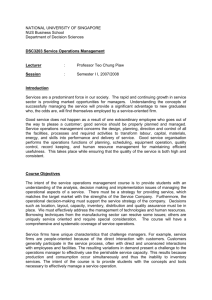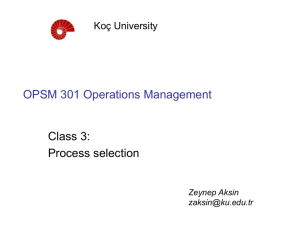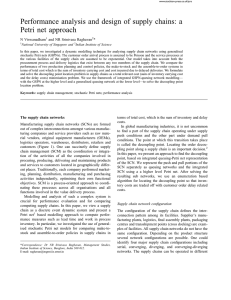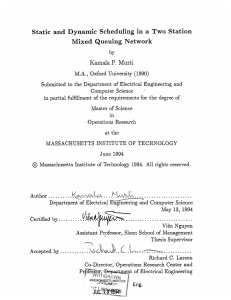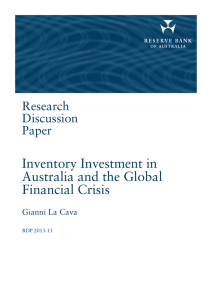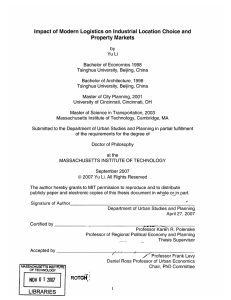Production and Operations Management: Manufacturing and Services
advertisement
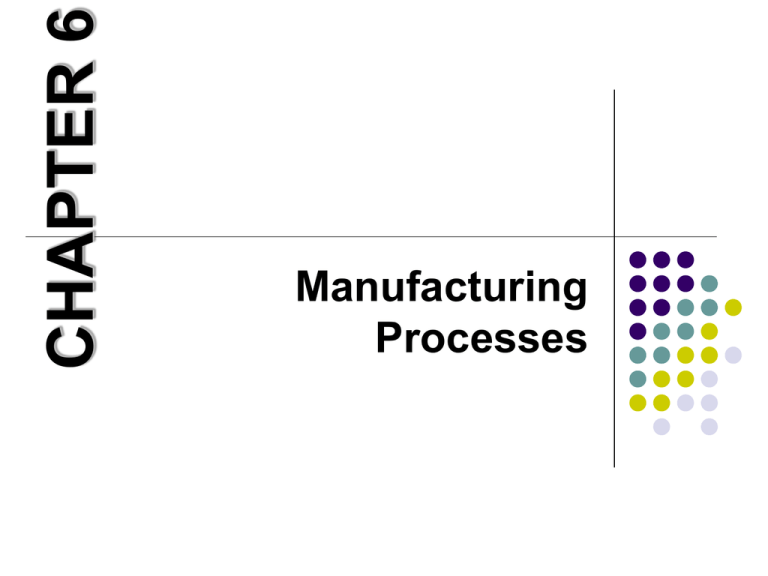
CHAPTER 6 Manufacturing Processes Learning Objectives 1. 2. 3. Demonstrate how production processes are organized. Explain the trade-offs that need to be considered when designing a production processes. Describe the product-process matrix. Types of Firms Make-to-stock firms: firms that serve customers from finished goods inventory Assemble-to-order firms: firms that combine a number of preassembled modules to meet a customer’s specifications Make-to-order firms: firms that make the customer’s product from raw materials, parts, and components Engineer-to-order firm: firm that will work with the customer to design and then make the product LO 1 Positioning Inventory in the Supply Chain LO 1 Make-to-Stock Examples of products Essential issue in satisfying customers is to balance the level of inventory against the level of customer service Televisions Clothing Packaged food products Easy with unlimited inventory but inventory costs money Trade-off between the costs of inventory and level of customer service must be made Use lean manufacturing to achieve higher service levels for a given inventory investment LO 1 Assemble-to-Order A primary task is to define a customer’s order in terms of alternative components since these are carried in inventory An example is the way Dell Computer makes their desktop computers One capability required is a design that enables as much flexibility as possible in combining components There are significant advantages from moving the customer order decoupling point from finished goods to components LO 1 Make-to-Order and Engineerto-Order Boeing’s process for making commercial aircraft is an example Customer order decoupling point could be in either raw materials at the manufacturing site or the supplier inventory Depending on how similar the products are it might not even be possible to pre-order parts LO 1 How Production Processes are Organized Project: the product remains in a fixed location Manufacturing equipment is moved to the product Workcenter (job shop): similar equipment or functions are grouped together Manufacturing cell: a dedicated area where products that are similar in processing requirements are produced Assembly line: work processes are arranged according to the progressive steps by which the product is made Continuous process: assembly line only the flow is continuous such as with liquids LO 2 Product–Process Matrix: Framework Describing Layout Strategies LO 4 End of Chapter 6 Any Questions?
